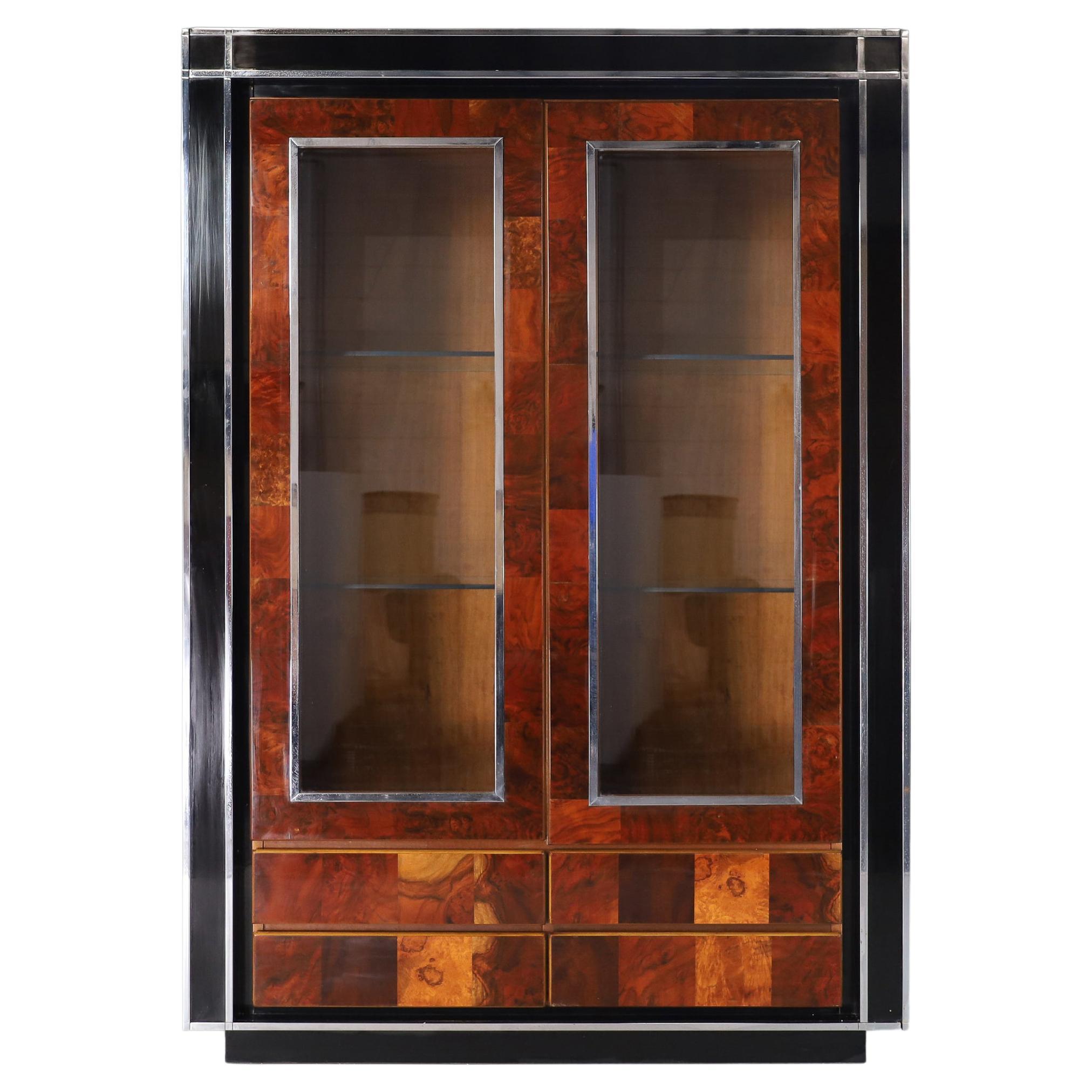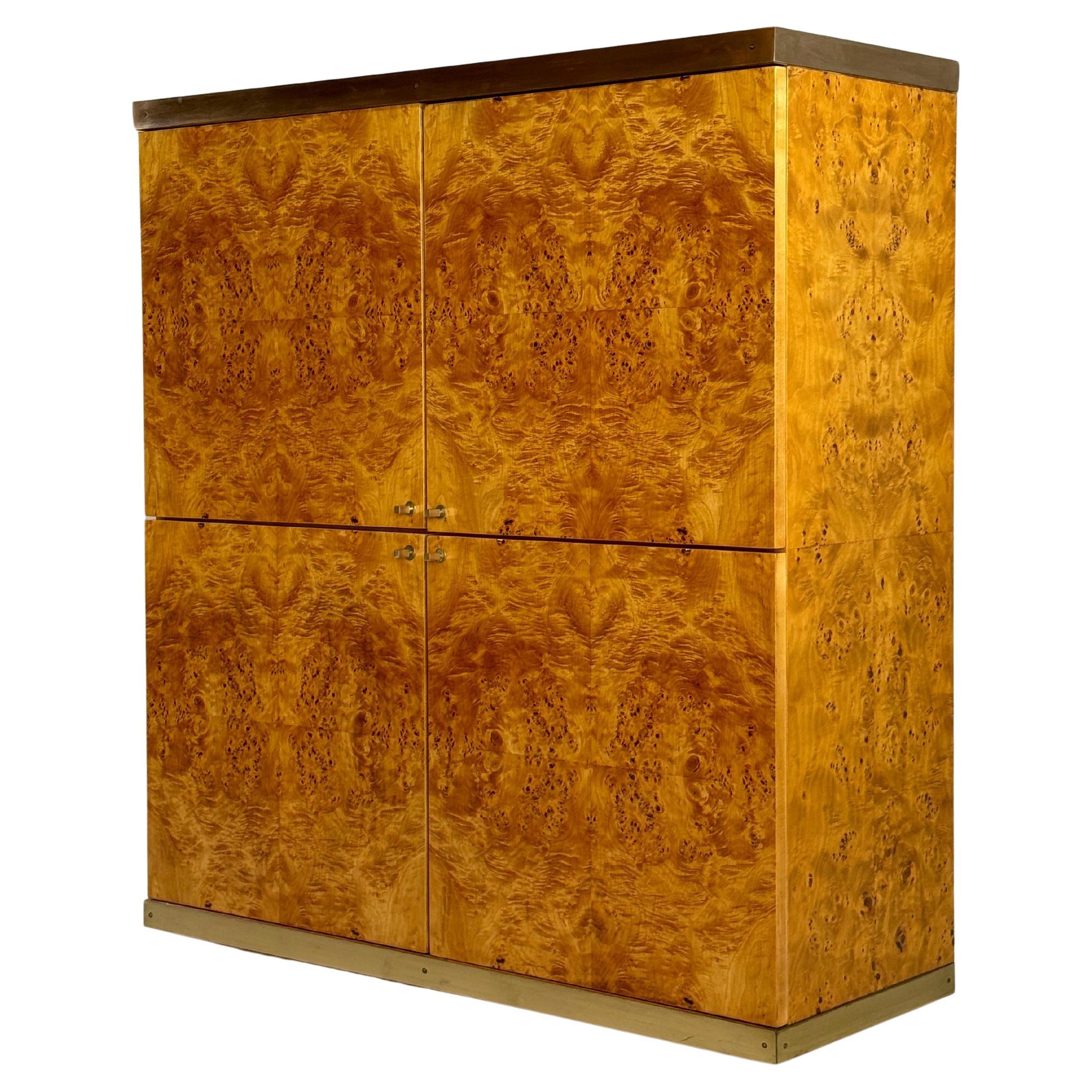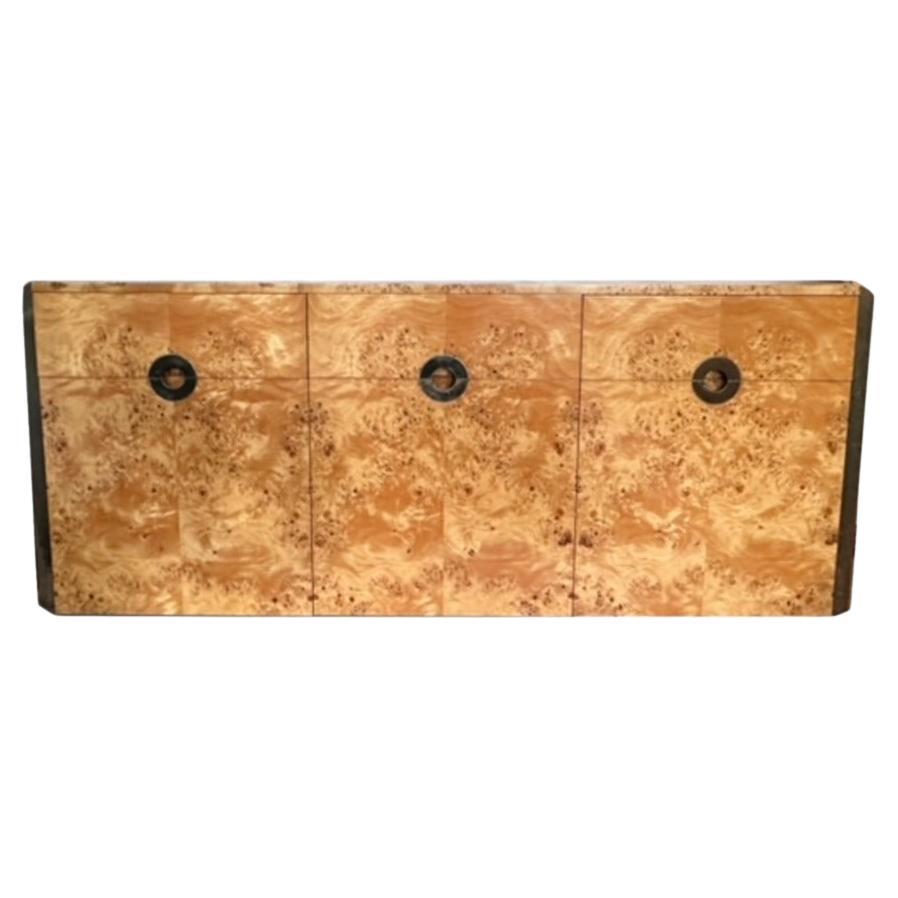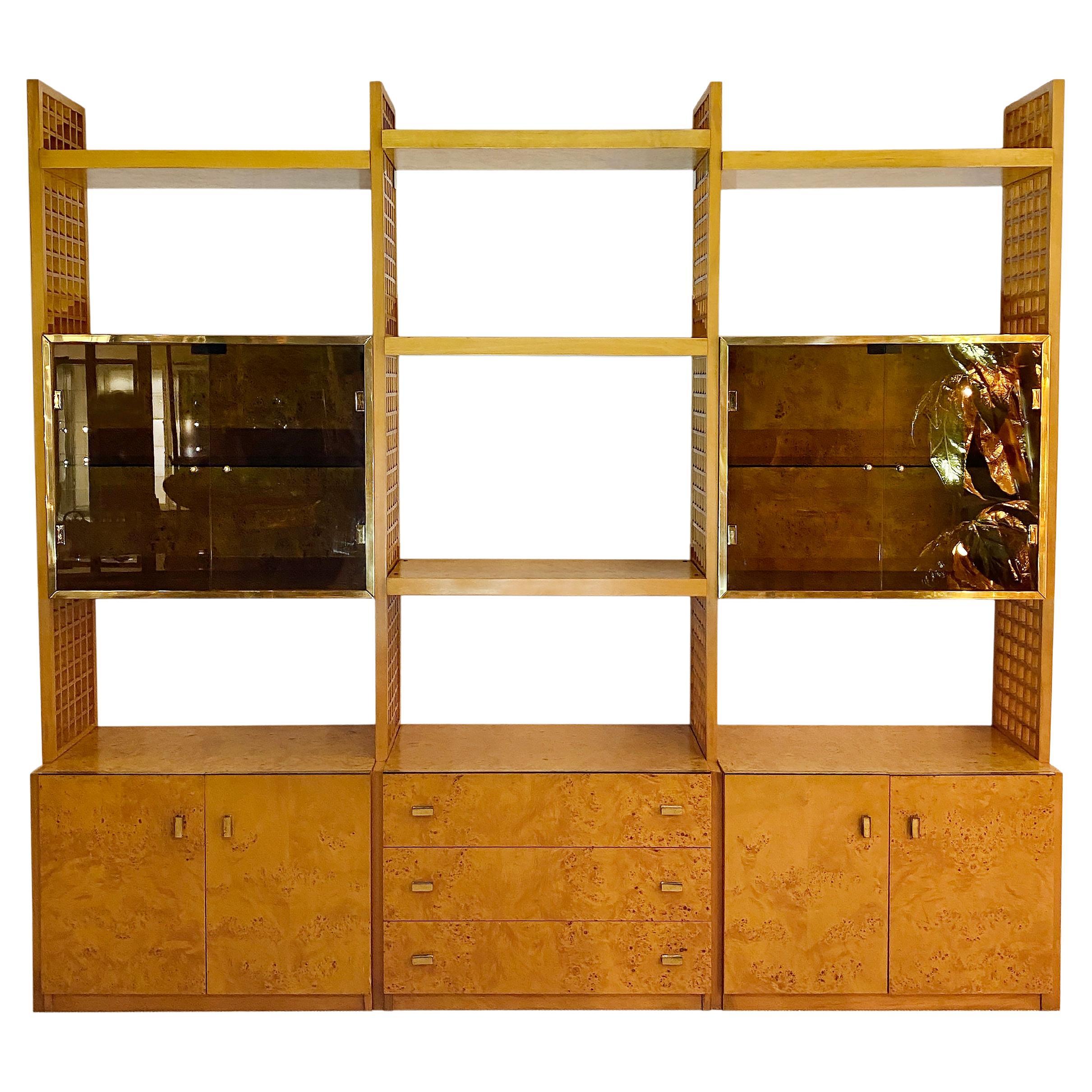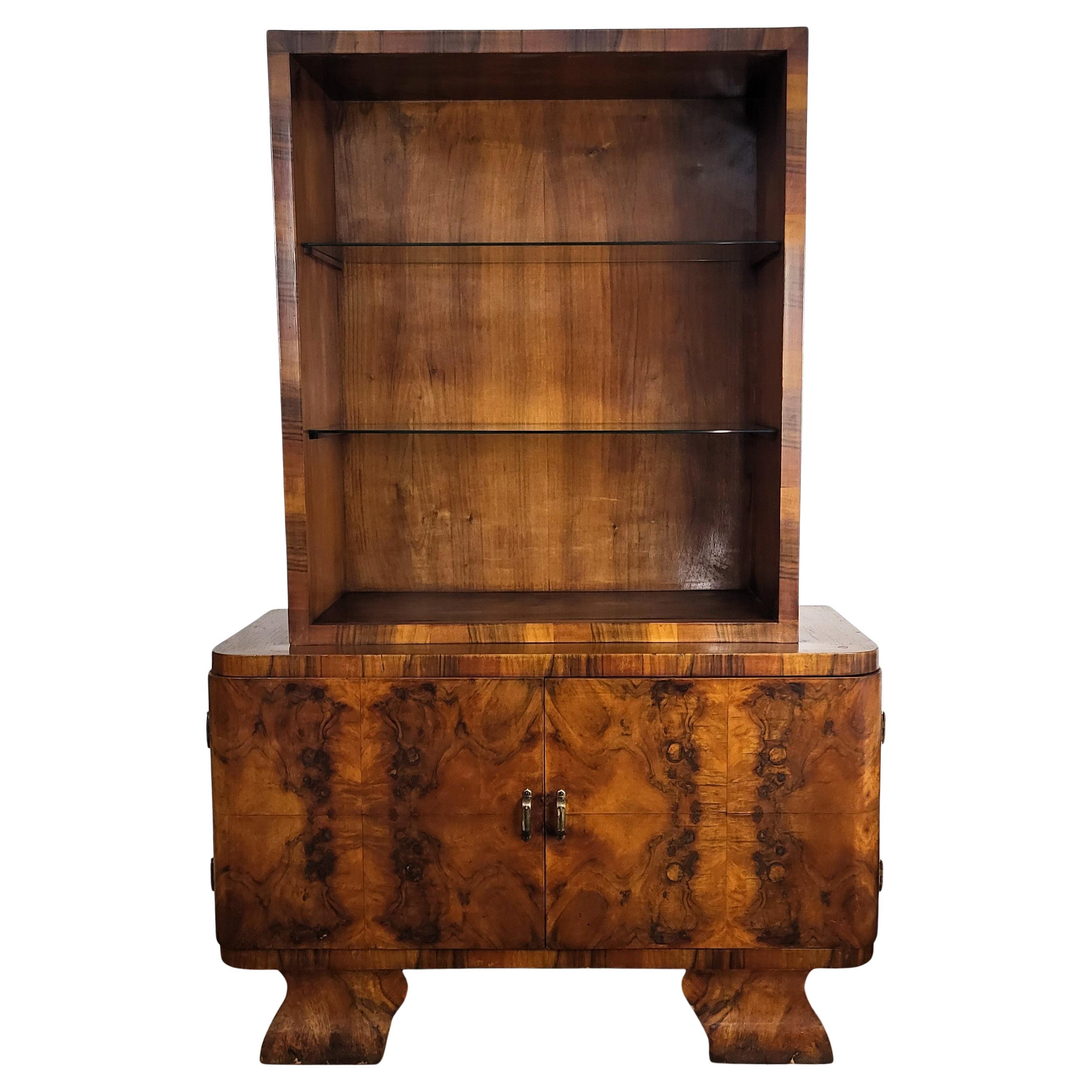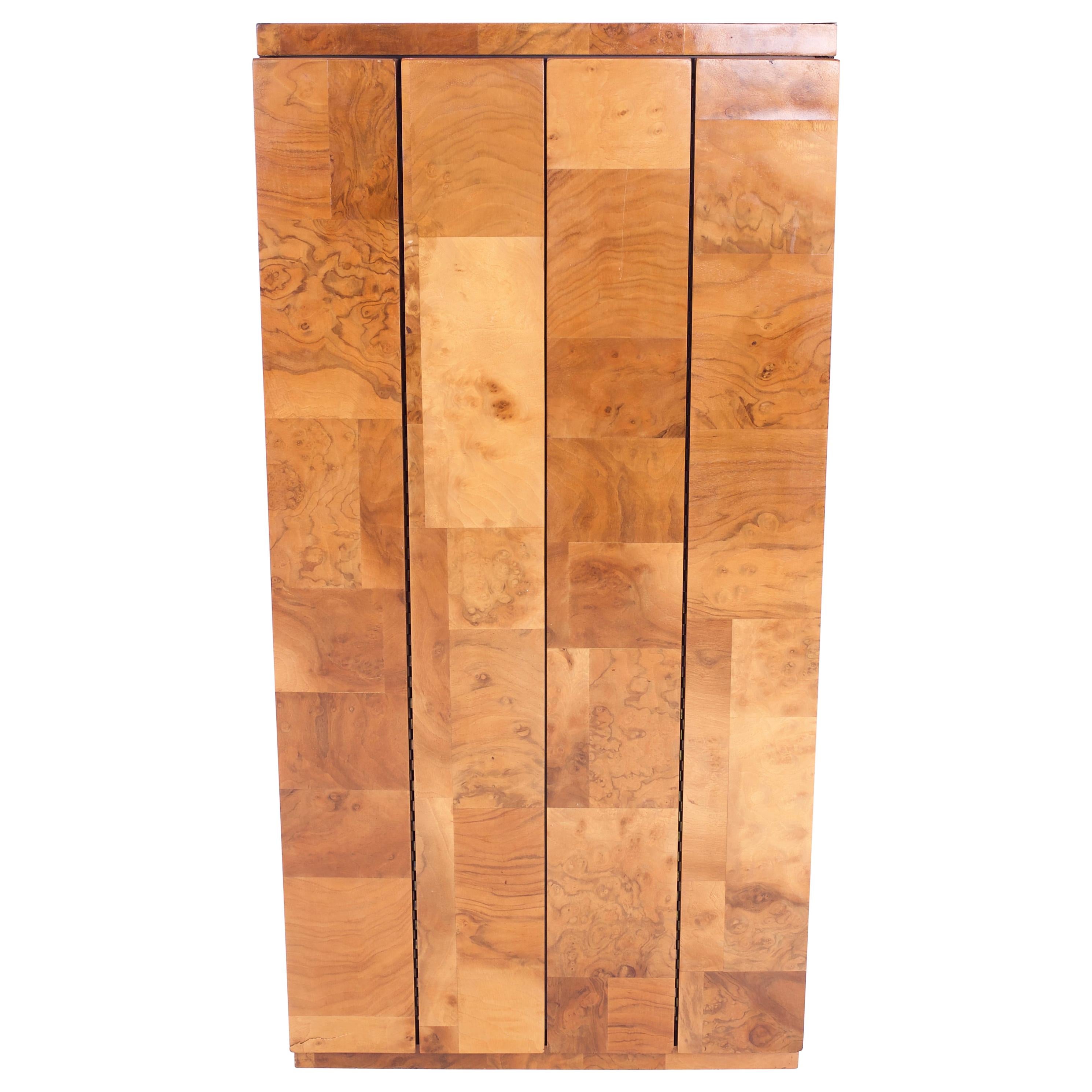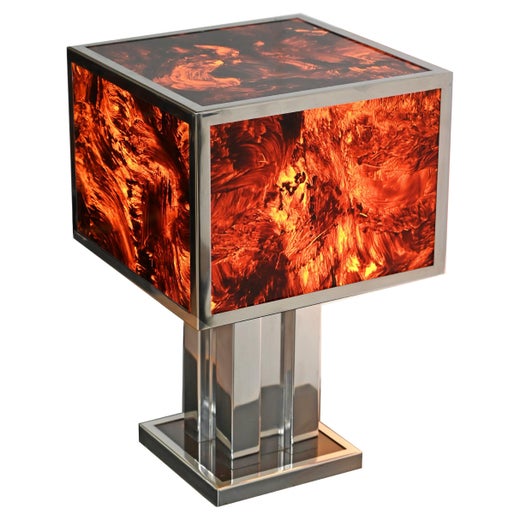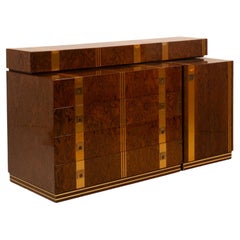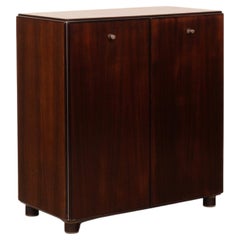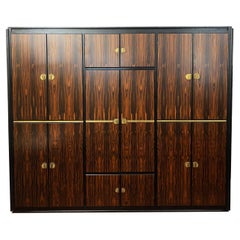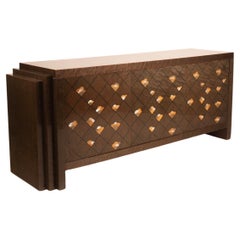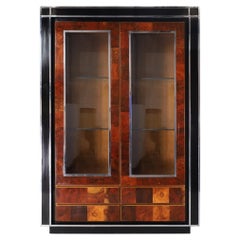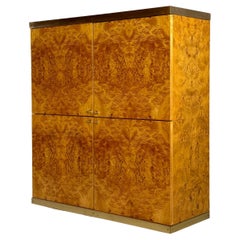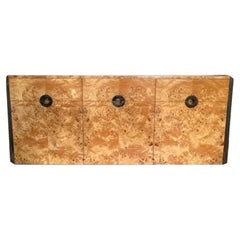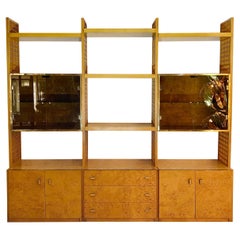Sequoia Barschrank aus Wurzelholz von Willy Rizzo für Mario Sabot
Angaben zum Objekt
- Schöpfer*in:Mario Sabot (Hersteller*in),Willy Rizzo (Designer*in)
- Maße:Höhe: 190 cm (74,81 in)Breite: 132,5 cm (52,17 in)Tiefe: 52,5 cm (20,67 in)
- Stil:Hollywood Regency (Aus dem Zeitalter)
- Materialien und Methoden:
- Herkunftsort:
- Zeitalter:
- Herstellungsjahr:1970
- Zustand:Abnutzung dem Alter und der Nutzung entsprechend.
- Anbieterstandort:Conversano, IT
- Referenznummer:1stDibs: LU8395245531982
Willy Rizzo
Der renommierte italienische Möbeldesigner Willy Rizzo ist berühmt für seine aufsehenerregenden Prunkstücke, die plüschige Stoffe mit Holz, Metall und Glas vereinen. Beeinflusst von den europäischen Modernisten und unter Bezugnahme auf die sparsamen Formen und klaren Linien des amerikanischen Stils der Mitte des Jahrhunderts, schätzte Rizzo Funktionalität und Einfachheit in seinen schillernden Arbeiten.
Der in Neapel geborene Rizzo hatte nie die Absicht, Möbel zu entwerfen. Stattdessen begann er im Alter von 12 Jahren mit der Fotografie. In den 1960er Jahren war er zu einem bekannten Fotografen geworden und hatte Bilder von Berühmtheiten wie Marilyn Monroe, Fred Astaire und dem spanischen Künstler Salvador Dalí aufgenommen. Seine Erfahrung mit Möbeldesign kam zufällig zustande, als er 1966 nach Rom zog. Dort mietete Rizzo mit seiner Frau Elsa eine Wohnung, die er als "praktisch unbewohnbar" bezeichnete. Unzufrieden mit dem Angebot an skandinavischen Möbeln baute Rizzo Sofas, Couchtische und andere Möbel, um dem Raum eine moderne Ausstrahlung zu verleihen. Als seine Freunde sahen, was er vollbracht hatte, waren sie von seinen Möbelkreationen begeistert und beauftragten ihn, ähnliche Gegenstände für sie zu bauen.
Von da an wuchs die Nachfrage nach Rizzos Möbeln. Er errichtete in Tivoli, in der Nähe von Rom, eine Produktionsstätte und eine Werkstatt, die auf über 150 Mitarbeiter anwuchs. Dort ließ er sich von den Werken berühmter Architekten wie Ludwig Mies van der Rohe und Le Corbusier inspirieren und entwarf mehr als 30 einzigartige Möbelstücke. Im Laufe der Jahre eröffnete er auf der ganzen Welt Boutiquen, in denen er seine Möbel präsentierte und verkaufte.
Rizzo war stolz darauf, das Zeitgenössische mit dem Klassischen nahtlos zu verbinden. "Es ging darum, etwas Neues für ein traditionelles Umfeld zu schaffen", sagte er über seine Arbeit. Von den schlanken Sideboards über die flachen Beistelltische und die eleganten Stühle bis hin zu den kompletten Wohnzimmersets zeigt sich Rizzos Stilempfinden in jedem Detail seiner Entwürfe.
Rizzo verkaufte sein Unternehmen im Jahr 1978 und kehrte zur Fotografie zurück. Die Präsenz seiner Möbel hallte jedoch bis ins neue Jahrhundert hinein nach und wird die Liebhaber der Inneneinrichtung sicher auch im nächsten beeinflussen. Im Laufe der Jahre zählten die französische Schauspielerin Brigitte Bardot, Salvador Dalí und der amerikanische Musiker Lenny Kravitz zu den prominenten Sammlern von Rizzos Werken.
Auf 1stDibs finden Sie eine Reihe von Vintage Willy Rizzo Tische, Beleuchtung, Sitzmöbel und Aufbewahrungsstücke.
- VersandAngebot wird abgerufen …Versand von: Conversano, Italien
- Rückgabebedingungen
Mehr von diesem*dieser Anbieter*in
Alle anzeigenVintage, 1970s, Italian, Kommoden
Metall, Messing
Vintage, 1960s, Italian, Barelemente
Rosenholz
Vintage, 1970er, Italienisch, Kleiderschränke
Messing
Vintage, 1980s, Italian, Anrichten
Ebenholz, Ahornholz
Vintage, 1960s, Italian, Barelemente
Kunststoff, Rosenholz
Vintage, 1960s, Italian, Moderne der Mitte des Jahrhunderts, Kommoden
Ebenholz, Rosenholz
Das könnte Ihnen auch gefallen
Vintage, 1970er, Italienisch, Moderne der Mitte des Jahrhunderts, Vitrinen
Wurzelholz
Vintage, 1970er, Europäisch, Schränke
Messing
Ende des 20. Jahrhunderts, Italienisch, Moderne der Mitte des Jahrhunder...
Messing
Vintage, 1970er, Italienisch, Hollywood Regency, Bücherregale
Metall, Vergoldung
Mitte des 20. Jahrhunderts, Italienisch, Art déco, Barelemente
Messing
Vintage, 1970er, amerikanisch, Moderne der Mitte des Jahrhunderts, Schränke
Holz
